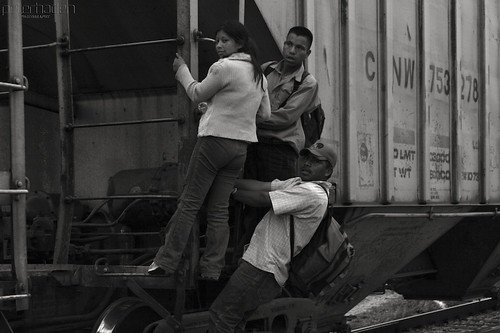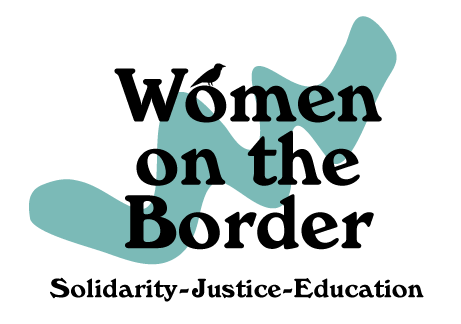Gender and Migration

(photo credit: Peter Haden)
In recent decades, women have become a larger percentage of the migrants crossing the US-Mexico border from the south. Many women cross the border for the same reasons that men do: to find higher wages to support children and other family members who remain at home, to continue their education, or to escape threats of violence.
Nonetheless, women’s relationship to work and family, and to both domestic and public violence shapes the way in which they make decisions about migration and the way they experience it.
Gender remains an important category of analysis when studying migration. A woman’s decision to migrate to the border to work in a transnational assembly plant, or to migrate to the United States takes place within the context of a gendered division of labor and cultural expectations about gender, family, and motherhood.
Women Migrants from Central America
Rising levels of female migration from the Northern Triangle of Central America stem in large part from the social disorganization, criminality, and mysogynistic violence that plague these societies. Honduras, El Salvador, and Guatemala have some of the highest rates of femicide in the world. A 2015 study by the UNHCR found that the vast majority of female migrants from Central America had suffered violence at the hands of their male partners at home or been targeted for extortion and/or sexual violence by members of the armed criminal gangs that control the streets. Because national law enforcement groups are often unable or unwilling to protect their female and LGBTQ+ citizens from gendered violence, many head to the US to seek protection.
Read some of the stories of immigrant women fleeing gender violence here:
Women Migrants Flee Gender Violence
Central American Women are Fleeing Domestic Violence Amid a Pandemic: Few Find Refuge in the U.S.
LGBTQ+ Migrants
Gender violence against LGBTQ+ people has also led to rising migration levels and a growing number of petitions for asylum in the relatively-more-safe-and-friendly United States. Despite a history of successful asylum claims, LGBTQ+ immigrants escaping homophobic and transphobic violence in their home countries are extremely vulnerable to violence along migration routes and suffer disproportionately from policies, such as the MPP (“Remain in Mexico Policy”), which make the process of seeking asylum more lengthy and dangerous.
For an interesting analysis of LGBTQ+ immigrants and US immigration policy see: Addressing Central American LGBTQ Asylum Seekers.
